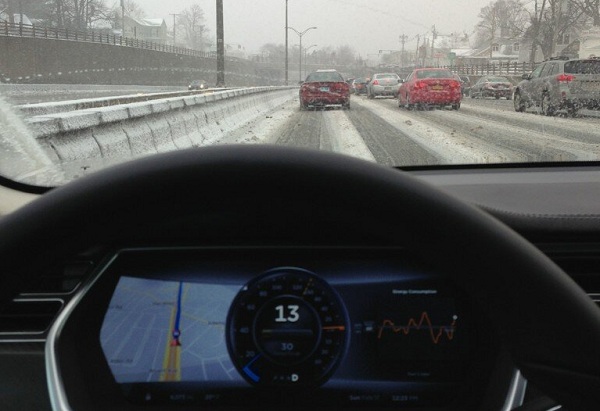After five days of reporting, The New York Times Public Editor Margaret Sullivan concluded on Monday that there was an absence of malice in reporter John Broder’s notorious Feb. 10 takedown of the Tesla Model S – and an absence of good judgment.
Sullivan largely endorsed the viewpoint of Tesla owner Roger Wilson, who said in an email to the Times-paid watchdog that Broder’s East Coast jaunt wouldn’t have ended with a Model S on a flatbed truck if the reporter had taken a little time to prepare for his journey and then shown good sense along the way. It was appropriate that Sullivan allowed Wilson to deliver the verdict in the case of Musk v. Broder. In doing so, she highlighted, wittingly or not, the most startling aspect of the whole brouhaha: how feeble the Times quickly became in the face of an impassioned, informed Tesla Nation.

Yes, yes, we’ve long known of print’s ebbing power, and it’s not news that the growth of digital media gives companies the ability to answer criticism. But here we saw those two trends come together in an electrifying way, supercharged, shall we say, by Tesla founder Elon Musk’s fevered rebuttals to Broder’s story; by the fact that Tesla had more facts of Broder’s trip than Broder himself did; by the willingness of other media to join the fray; and finally by the response of Tesla’s fan base.
Musk comes first in this roster of factors because he set everything in motion. He didn’t play the usual corporate game of handling criticism with care and discretion. Right out of the box he made an outlandish claim, accusing Broder of producing a “fake” story. Sullivan rightly rejected that charge (as well as subsequent charges from others that Broder had carried out an even slightly malicious agenda), but Musk’s remarks set a tone: Tesla was going to fight this, and it was going to fight this with everything it had.
And it had data.
The data, as it turned out, wasn’t quite as conclusive as Musk said it would be, but it raised enough questions that it knocked Broder back on his heels. Broder’s counter-rebuttal scored a few points, but the more telling takeaways were (1) that the Times had been forced to quickly respond to the subject of an article; and (2) how fuzzy Broder was on many details. As Sullivan wrote in her Monday adjudication:
Mr. Broder left himself open to valid criticism by taking what seem to be casual and imprecise notes along the journey, unaware that his every move was being monitored. A little red notebook in the front seat is no match for digitally recorded driving logs, which Mr. Musk has used, in the most damaging (and sometimes quite misleading) ways possible, as he defended his vehicle’s reputation.
Meanwhile, Musk’s uncharitable assessment of Broder’s journalism practically required other media to jump in and in today’s rollicking, everyone-can-play world, jump they did. Most tellingly, by Friday evening, CNNMoney’s Peter Valdes-Dapena had done the Broder route himself, completing it without issue and telling readers that the Model S is “an impressive car” and that the Supercharger Network worked.
But Valdes-Dapena wasn’t the only one driving the Broder route; before long a half-dozen Tesla owners were on their way, quickly gathering a few thousand followers on Twitter, including many in the media.
Telsa owners, clearly in love with their vehicles and inspired by Musk’s challenge to the Times, had for days been filling message boards and comment sections with denunciations and dissections of Broder’s story. But now their passion and their ability to use new media tools to reach an audience brought Tesla Nation into a rebel alliance with the company against The New York Times and any who might carelessly criticize the Model S.
George Blankenship, Tesla’s VP for “sales & ownership experience,” captured the sentiment on a Tesla forum discussing the Twitter-trippers:
We go to work every day committed to doing something that we believe will make a difference in the future. All of you should know that what you are doing for us this weekend inspires us and reminds us that there are people out there who believe in what we are doing and who are willing to stand behind us when the going gets tough.
John Broder might have thought he was powerless out there on the highway in his Tesla, but his – and The New York Times’ – true powerlessness was really brought home by the response to his story.